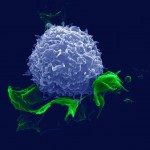Lien vers Pubmed [PMID] – 12235085
Gut 2002 Oct;51(4):585-90
OBJECTIVE: A significant proportion of individuals with chronic hepatitis C virus (HCV) infection have persistently normal alanine aminotransferase (ALT) levels. Although data are controversial, such patients usually have weaker histological damage and a lower progression rate of fibrosis. The aims of this study were: (1) to compare demographic, virological, and histological parameters of HCV patients with normal ALT values with those of HCV patients with elevated ALT levels; and (2) to determine whether HLA class II alleles contribute to the persistence of normal ALT levels in HCV patients.
PATIENTS AND METHODS: Eighty three patients with chronic HCV infection and persistently normal ALT values (group 1) and 233 patients with chronic HCV infection and elevated ALT levels (group 2) were studied. Histological features were expressed using Knodell and Metavir scores. HLA DRB1* and DQB1* genotyping was performed using hybridisation with sequence specific oligonucleotides after genomic amplification. The kappa2 and Fisher’s exact tests were used to compare discrete variables and phenotype frequencies between the two groups, and Wilcoxon’s test was used for continuous variables. A multivariate logistic regression model was used to determine which variables predicted normal ALT values.
RESULTS: ALT levels were correlated with the severity of liver damage. In group 1, 93% of patients had an F0 or F1 Metavir index of fibrosis compared with 47% of patients in group 2 (p<0.001). A longer duration of infection (p<0.001) and increased DRB1*11 phenotype frequency (pc=0.03) were observed among patients with normal ALT. The two groups did not differ with regard to the mode of contamination or viral genotype. After logistic regression, young age (p=0.0008), female sex (p=0.01), long duration of infection (p=0.0001), and HLA DRB1*11 (p=0.050) were more strongly associated with persistence of normal ALT.
CONCLUSIONS: Our study confirms that patients with chronic hepatitis C and normal ALT levels have less severe liver disease than those with elevated ALT levels. This particular biochemical outcome may be explained, at least in part, by host immunogenetic factors such as the presence of HLA-DRB1*11.

